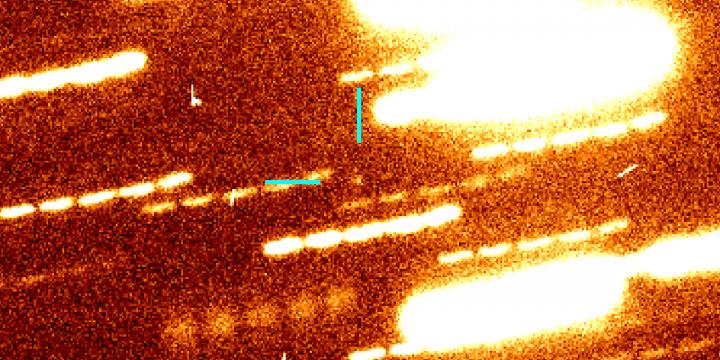Operated by the Japan Aerospace Exploration Agency (JAXA), the asteroid explorer Hayabusa2 delivered a reentry capsule to Earth containing samples from the asteroid (162173) Ryugu on December 6 (Japan Standard Time). After this drop-off, Hayabusa2 set out again, this time for the extended mission utilizing its remaining fuel. In this extended mission, Hayabsa2 is supposed to approach and observe its next target, the small asteroid 1998 KY26.
This asteroid is predicted to approach to within 0.47 AU of Earth in mid to late December 2020, giving us a rare opportunity that comes only once every three and a half years. However, the diameter of 1998 KY26 is estimated to be no more than 30 meters, and thus its brightness is so dim that ground-based observations of the asteroid are difficult without a very large telescope.
The observations with the Subaru Telescope were conducted upon the request of the Institute for Space and Astronautical Science (ISAS), JAXA. And as a result, 1998 KY26 was photographed in the direction of the constellation Gemini as a 25.4-magnitude point of light with a measurement uncertainty of 0.7 mag. The positional data collected during these observations will be used to improve the accuracy of the orbital elements of the asteroid. Similar observations were conducted with the Very Large Telescope (VLT) of the European Southern Observatory (ESO).
“We successfully photographed the next target asteroid for Hayabusa2. We hope that these data will facilitate Hayabusa2’s new mission,” says Dr. Michitoshi Yoshida, Director of Subaru Telescope.
“After returning its reentry capsule to Earth, Hayabusa2 departed for a new target object, a small asteroid known as 1998 KY26. This will be the first mission to this small of an asteroid, so it is very meaningful both in terms of planetary science and planetary defense (protecting Earth from collisions with stellar objects). These Subaru Telescope observations will not only become very important data for Hayabusa2’s extended mission, they will also give a boost to future missions. We are grateful to everyone at Subaru Telescope.” says Dr. Makoto Yoshikawa, the Hayabusa2 Mission Manager at ISAS, JAXA.
###


